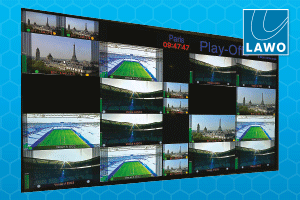ARABSAT has finalised the mission definition for BADR-7 and confirmed the in-orbit delivery contract to the consortium of Astrium and Thales Alenia Space which has already started building the new satellite. Astrium and Thales Alenia Space are jointly responsible for building the satellite and delivering it in orbit. Astrium, the leading partner, will supply the […]
 ARABSAT has finalised the mission definition for BADR-7 and confirmed the in-orbit delivery contract to the consortium of Astrium and Thales Alenia Space which has already started building the new satellite.
ARABSAT has finalised the mission definition for BADR-7 and confirmed the in-orbit delivery contract to the consortium of Astrium and Thales Alenia Space which has already started building the new satellite.
Astrium and Thales Alenia Space are jointly responsible for building the satellite and delivering it in orbit. Astrium, the leading partner, will supply the Eurostar E3000 platform and integrate the satellites. Thales Alenia Space will design and build the communications payload.
In a ceremony today in Ryadh, Eng. Khalid Balkheyour, ARABSAT president and CEO, Eric Béranger, CEO of Astrium Satellites and Jean-Loïc Galle, CEO of Thales Alenia Space signed the contract which defines the new mission assigned to the satellite.
Following the signing François Auque, CEO of Astrium, said: “I want to thank ARABSAT for having awarded Astrium the joint responsibility of building and integrating BADR-7.”
The new satellite, the first in ARABSATs sixth generation of satellites, will be co-located with ARABSAT satellites at the 26° East video hot spot known as BADR. It will extend ARABSATs in-orbit capacity at this location for direct-to-home television broadcast and telecommunications services, and will provide broadband services in Ka-band with spot beam coverage.
BADR-7 is based on the Astrium-built Eurostar E3000 platform and is able to operate up to 24 transponders in Ku-band and 24 spot beams in Ka-band, as well as three transponders in Ka-band for additional services.
Four deployable antennas and three fixed antennas will address service regions over a large coverage that includes the whole of MENA, South and North-West Africa and Central Asia.
BADR-7 will weigh 6100 kg at launch and have a spacecraft power of 12 kW at the end of its more than 15-year design life. It is planned for launch in late 2015.

















































































